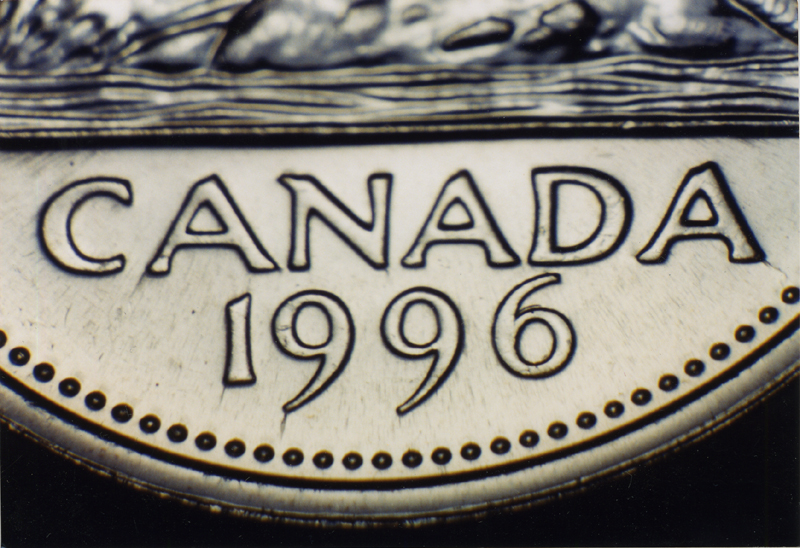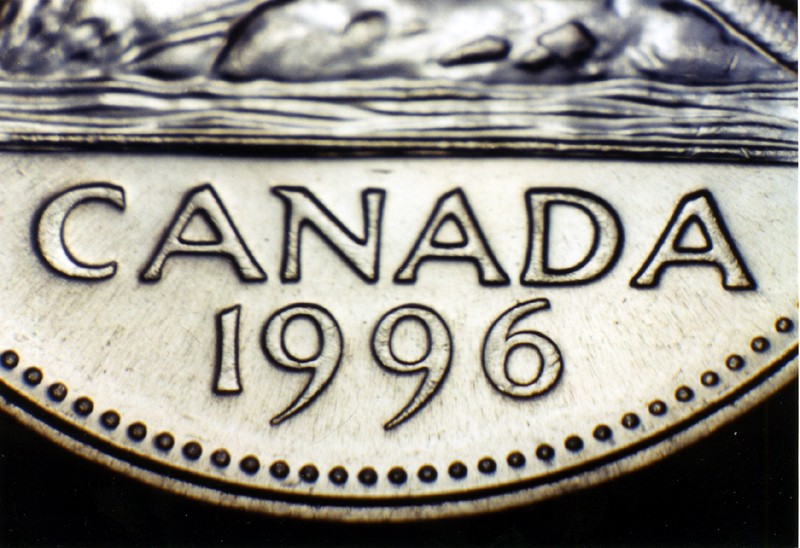|
|
|
|
"Near 6" and "Far 6"
Date Varieties on Canadian
1996 Five-Cent Pieces Examined
by Ken Potter -- NLG
October 31, 2009
(Reports on these varieties have appeared previously in my September 2001 Coin
World, Visiting Varieties column and again in my March/April 2009 CONECA
Errorscope column)

Photos © Ken Potter 2001 / Coin Courtesy of Jerry
Kennison
"Near 6" VCR#1/DVR#1

Photos © Ken Potter 2001 / Coin Courtesy of Jerry
Kennison
"Far 6" VCR#2/DVR#2
Back in May of 2001 Jerry Kennison sent in a pair of 1996
Canadian five-cent pieces. Each coin displayed the 6 in the date either closer
or further to the D in
CANADA than the other and I dubbed them the "Near 6" and "Far 6"
varieties.
Such differences are more often than not simply the result of a die that has
been abraded to a point of reducing the diameters of the design details on the
die and thus the distances between them.
For the most part, differences
attributable to abraded dies are ignored by variety coin specialists – though
there are some exceptions. However, the varieties sent by Kennison were legit!
Positional differences like this are quite far and few between on the modern
coins of Canada and represent coins struck from dies originating from two
distinctly different hubs (known as punches in Canada). A hub is a master tool that bears the coin’s design
in relief just as it would be seen on the coin. It is used to make the working
dies, which are then used to make coins.
In this case, it appears that a second master die was used to make a second working hub for the year. However, that master die needed a 6 punched into it before making the new hub and the 6 was entered in a slightly different position than it had been on the earlier master die. This makes sense, since leaving the final digit of the date off the master hub (used to make the master dies) would allow it to be used for at least a decade assuming it lasted that long. Each year all the Mint would have to do is add the final digit into a new master die and then make a working hub it from which the working dies would be produced to strike the coins.
Obviously, in most years there is no reason to make a second master die, however, in this case, for some reason, the Mint decided to make two master dies in two separate operations where the final digit needed to be added in. Now the question is, which of the two varieties is the more scarce? Is one common and the other rare? In addition to the circulation quality business strikes, what can be found within the government-issued Mint sets (commonly referred to as proof-like sets) and in the proof sets? Are they all one type or are they mixed? If mixed, which type is rare in each of these sets? I ask owners of these coins to check them out and report back to me on your finds at the email or physical address listed at the end of this article. We’ll try to get a handle on which formats these varieties exist and how rare they might be in each and then report back later.
I have listed these in the Variety Coin Register to the country, date and denomination as VCR#1/DVR#1 for the "Near 6" and as VCR#2/DVR#2 for the "Far 6".
In closing I'd like to note that in spite of these varieties being publicized twice already in columns I've written over the past eight years, I have had no feedback on which variety may be the more scarce of the two or if these varieties can be found in the uncirculated mint sets (PL sets) or Proof sets. Any feedback would be appreciated.
Ken Potter
P.O. Box 760232
Lathrup Village, MI 48076-0232
Phone: 1-(313)255-8907 E-mail: KPotter256@aol.com
Numismatist Since 1959 ~ Serving
The Collector Since 1973
CONECA's Longest Serving Doubled Die Attributer
Member of: ANA-LM, CONECA-LM,
NLG, NCADD-FM, IASAC, MSNS-HLM, NWDCC, WBCC
Visit Ken Potter's
Variety Vault